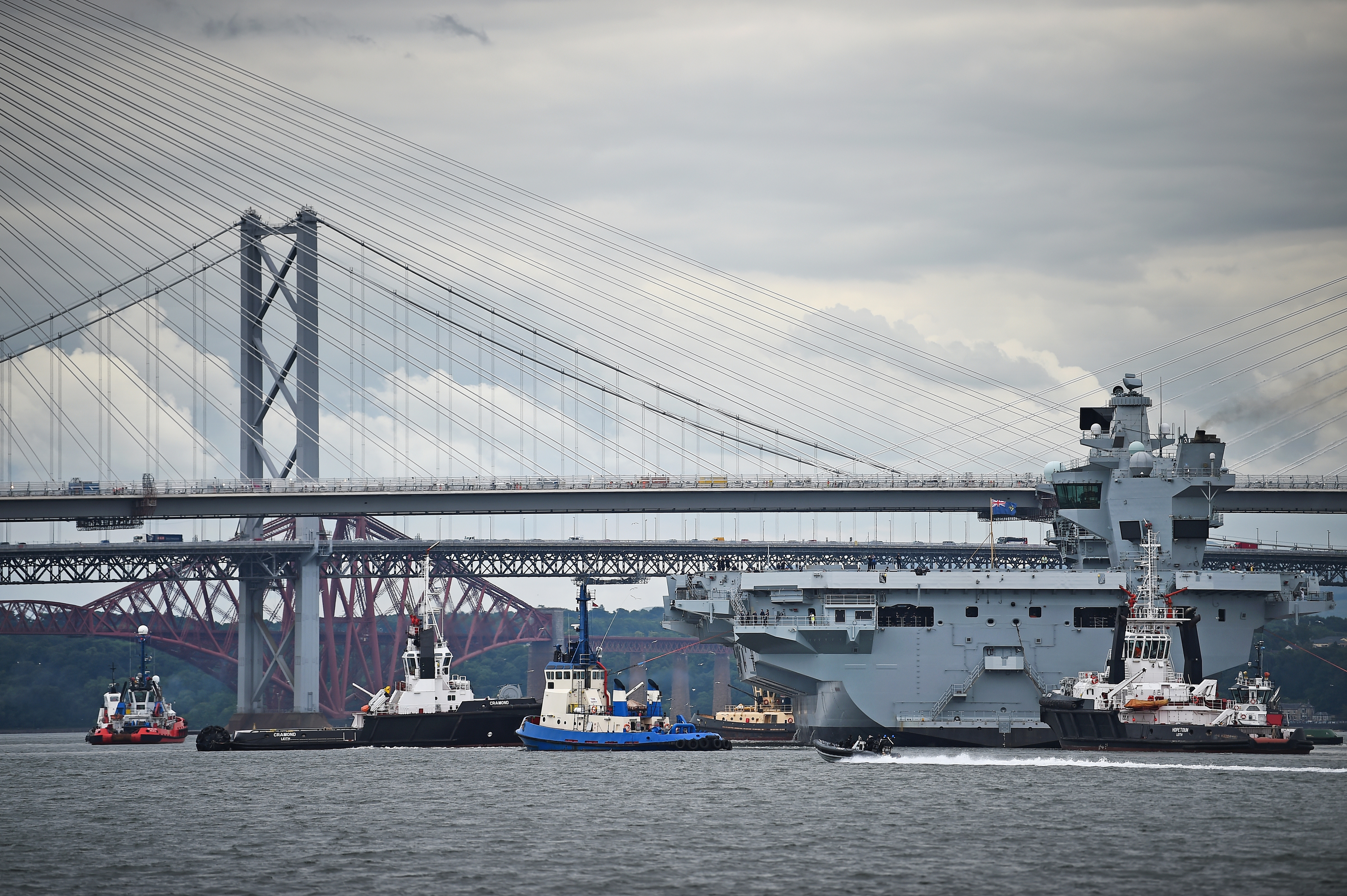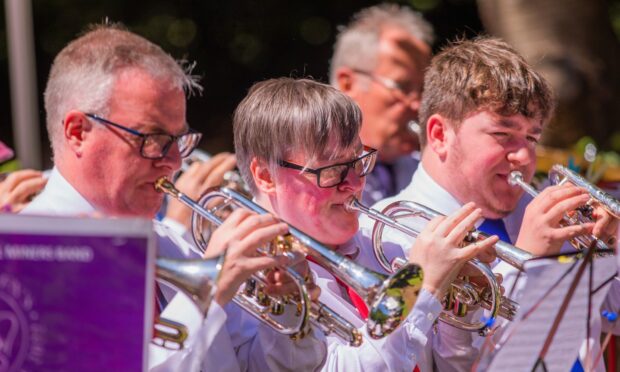Fife’s “exceptional” shipbuilders were hailed yesterday as HMS Queen Elizabeth left Rosyth dockyard for the first time.
In an intricate and often nail-biting series of manoeuvres, the largest and most powerful ship in the history of the Royal Navy was towed out of her Fife home and into the Firth of Forth.
There she remained anchored for several hours and was expected to transit under the three Forth bridges in the early hours of this morning.
Hailing those who constructed Britain’s new flagship, Rear Admiral Keith Blount said of the Fife dockyard workers: “They really have done a fantastic job.
“Everyone in this yard has been exceptional.
“The ship has been built in bits around the United Kingdom but it’s all been assembled here and that job has been technologically challenging and executed extremely well.”
The aircraft carrier will now anchor off the Fife coast, most likely Kirkcaldy, for the next few days as system checks are carried out before the carrier embarks upon sea trials in the North Sea.
“That is planned and part of the process we have to undertake to make sure everything is tested,” added Mr Blount.
“The sea trials will last around six weeks after which we’ll bring the ship back here for a period of planned engineering.
“It will then go to sea again for more sea trials with the ship then arriving in her home port of Portsmouth before the end of the year.”
Yesterday’s move took less than three hours to complete, with 11 tugs required to inch the massive carrier out of the yard where she has been under construction since 2009.
At its tightest point, the carrier had clearance of just 30 centimetres at each side, and 50 centimetres to the sea bed.
She was required to anchor in the river before heading under the bridges due to its height.
However, even at low tide there was expected to be just two metres of clearance between it and the Forth Bridge and during yesterday’s manoeuvres the Forth Road Bridge was closed to all pedestrian traffic.
Dockyard worker William Somerville looked on as HMS Queen Elizabeth made its way out of Rosyth.
He said: “Everybody is very proud of her. It’s been a great achievement.”
Next year it is anticipated that HMS Queen Elizabeth will head to the United States for aircraft trials with Lockheed Martin F-35B multi-role fighters, of which up she will carry up to 36, along with several Merlin anti-submarine helicopters.
It is expected that she will formally enter service in 2020.
Her sister ship, HMS Prince of Wales, is currently under construction, also at Rosyth.









